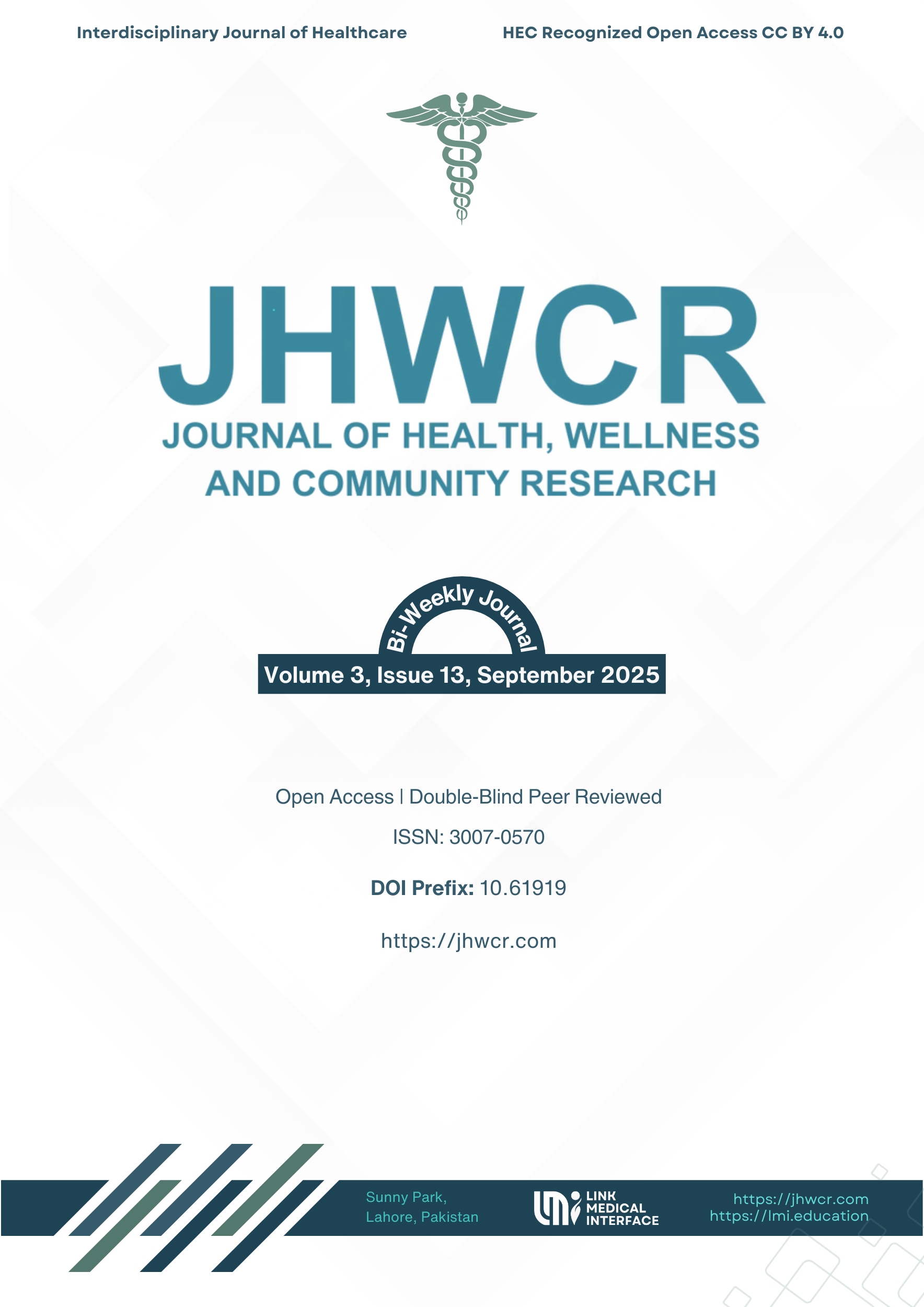Identification of Interstitial Lung Diseases in Smokers vs Non-Smokers Using HRCT
DOI:
https://doi.org/10.61919/ry9n8j38Keywords:
Interstitial Lung Disease, HRCT, Smoking, Usual Interstitial Pneumonia, Pulmonary Fibrosis, Desquamative Interstitial PneumoniaAbstract
Background: Interstitial lung diseases (ILDs) are a diverse group of pulmonary disorders characterized by inflammation and fibrosis of the lung interstitium, often leading to irreversible respiratory impairment. Cigarette smoking is a well-established environmental risk factor implicated in the initiation and progression of ILD. High-resolution computed tomography (HRCT) plays a pivotal role in the early detection and classification of ILD patterns, offering diagnostic precision that can guide timely intervention. However, data comparing HRCT patterns of ILD in smokers versus non-smokers, particularly in South Asian populations, remain limited. Objective: To identify and compare HRCT findings of interstitial lung diseases in smokers and non-smokers and to evaluate the association between smoking status and ILD prevalence. Methods: This cross-sectional observational study was conducted at Hameed Latif Hospital, Lahore, from January to December 2023. A total of 72 adults (36 smokers, 36 non-smokers) aged 18–80 years underwent HRCT chest imaging. HRCT scans were interpreted independently by two radiologists blinded to smoking status. ILD was defined radiologically using ATS/ERS classification criteria. Associations between smoking, demographic variables, and ILD presence were analyzed using chi-square tests, with effect sizes (Cramer’s V) and p-values reported; p < 0.05 was considered significant. Results: ILD was detected in 42 participants (58.3%), with a significantly higher prevalence among smokers (88.9%) than non-smokers (27.8%) (p < 0.001, Cramer’s V = 0.60). The most frequent HRCT pattern was Usual Interstitial Pneumonia (UIP) (12.5%), followed by Non-Specific Interstitial Pneumonia (NSIP) (8.3%) and Desquamative Interstitial Pneumonia (DIP) (5.6%), all exclusively observed in smokers. Age and gender showed no significant association with ILD occurrence (p = 0.143 and p = 0.733, respectively). Conclusion: Smoking is strongly associated with ILD presence and fibrotic HRCT patterns, particularly UIP and DIP, indicating its role in pulmonary parenchymal injury and remodeling. HRCT serves as an effective tool for early ILD detection, emphasizing the need for routine imaging surveillance and smoking cessation strategies in high-risk individuals.
Downloads
Published
Issue
Section
License
Copyright (c) 2025 Muhammad Syed Yousaf Farooq, Muhammad Usman, Dawood Abid, Misbah, Naveera Ali, Shumaila Ashraf, Maira Younas, Wajiha Zafar (Author)

This work is licensed under a Creative Commons Attribution 4.0 International License.


